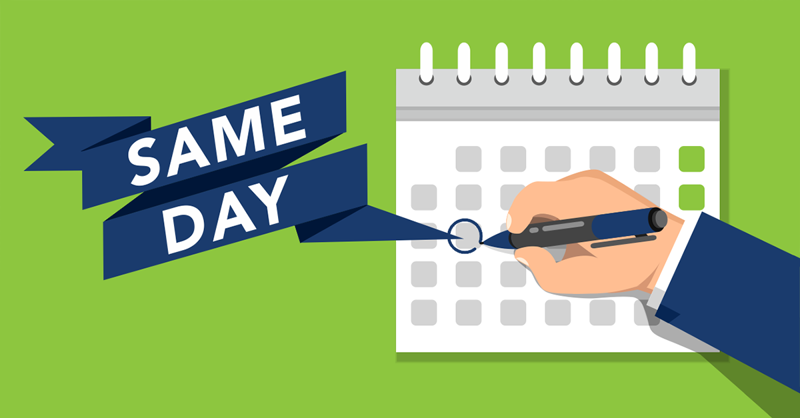The competition among online retailers to provide the best shopping experience has gotten fierce – and it’s the consumer who is benefitting the most. Even Amazon Prime’s two-day delivery is not always the best and quickest option to buying something online anymore as customers look for their orders even quicker than that.
Despite that, improving on what Amazon already offers is no small task. Equaling Prime has proven hard enough. This means that exceeding what Amazon can provide consistently (such as with same-day delivery) will take a new way of doing business for e-tailers, retailers, and the carriers doing the work.
Same-Day Delivery
Driving the need for speed is the fact that online retailers are not only competing against each other, but they are also competing against the immediacy a physical store offers. Consumers, understandably, are happiest when they get what they want right away. This extends to where shoppers decide to buy online, which makes promised delivery speed a major part of the shopping choice. So, the importance of fast delivery weighs on how customers compare a retailer to other online options, just as it does against the idea of shopping at a physical store.
With faster delivery times comes new pressure on companies’ delivery networks to perform. This is a big deal when you consider right now that USPS, UPS, and FedEx have little ability to offer same-day delivery as an option to their shipper customers. This is forcing retailers to figure out solutions on their own.
Keeping Up with Amazon
Amazon has already taken the lead in the market with same-day delivery – creating the ability to deliver certain items, in certain markets within hours. Other online and brick-and-mortar retailers are investing heavily in updating their distribution and warehouse capabilities to offer the same. The challenges are many but start with the fact that few retailers have the national footprint of Amazon or its logistics infrastructure. At the same time, this is good news because it is forcing them, and the broader industry, to be creative in meeting this challenge. We’ll be better off for it in the long run.
Here are some of the other companies making real progress towards the goal of providing same-day delivery:
- Walmart: Recently buying jet.com and delivery technology company Parcel is a clear attempt by the company to up its e-commerce sales and delivery game – and create the logistics infrastructure necessary to perform same-day delivery at scale.
- Target: By acquiring delivery service Shipt in 2017, Target is fast-forwarding the process of building a scalable last-mile logistics network that will enable it to make same-day delivery of in-store products. The service is expected to be live by the end of 2018.
- As a spin on the same idea, but in a more non-retailer specific way, eBay Now and Google Express are looking to leverage their customer scale and local delivery fleets to provide same-day delivery to customers.
Crowdsourcing Apps
Faster delivery is also becoming available for the broader marketplace through crowdsourcing companies such as Postmates, Deliv, and UberRush. These companies are leveraging the power of the “on-demand” economy and the extra delivery capacity sitting idle waiting to help.
While same-day delivery is an opportunity to improve service levels, challenges such as inventory visibility and short fulfillment lead-times persist. This belies the importance of technology to manage the process because a positive customer experience is about more than just the delivery. Customers want real-time updates and shipment visibility along the way.
As same-day delivery becomes the norm, supply chains will need to improve just as quickly. It’s a costly exercise with little-established infrastructure in place on the part of many retailers today. Logistics providers take note: those who want to be part of the future will have to improve their operations to give the market what it needs.
